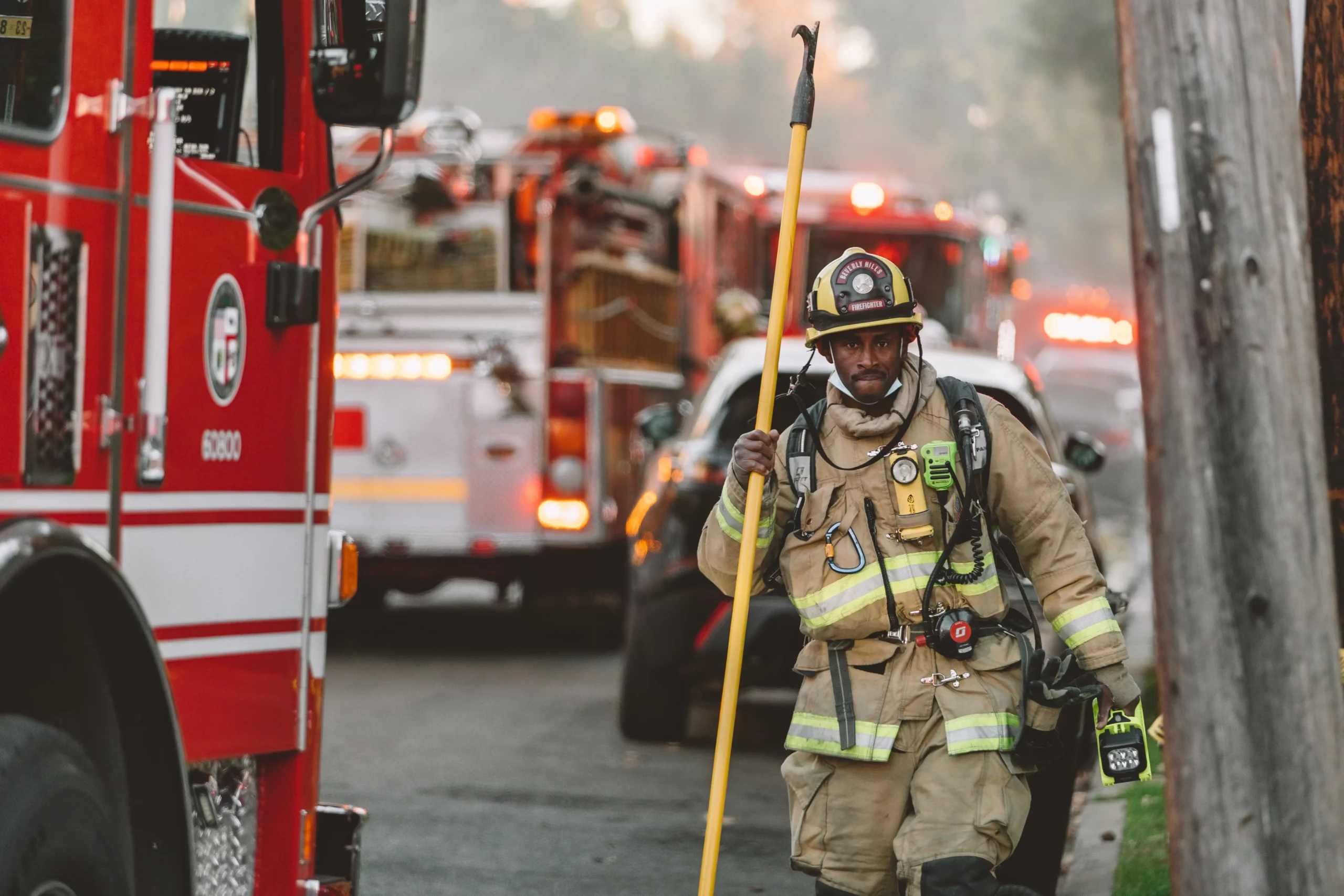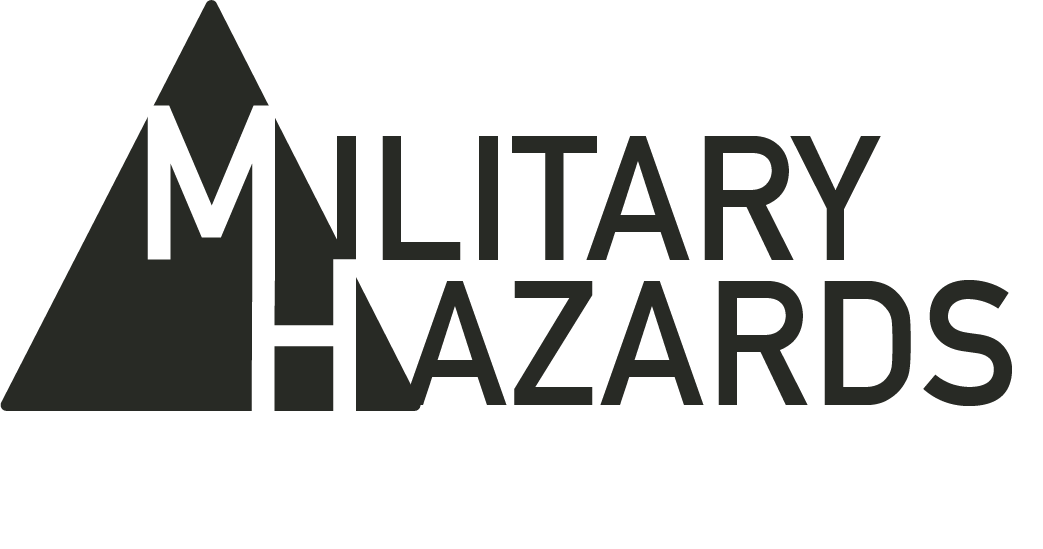Contact Our Legal Partner
"*" indicates required fields

Firefighters hold essential positions in both our local communities and in the military. Nevertheless, such positions can be extremely dangerous and it is not uncommon, when performing the duties associated with firefighting, for firefighters to be exposed to extreme occupational hazards. This should come as no surprise when considering that the main function of a firefighter is, well… to fight fires. As if the fires themselves did not pose enough risk, firefighters also face a litany of other hazards that they should be aware of. The section that follows will discuss some of the risks along with a few ways to minimize those risks as much as possible.

Understanding the occupational hazards associated with firefighting is essential to staying safe while performing an already dangerous job function. Additionally, it is always important to stay abreast of new information as it becomes available. Indeed, the discovery of new occupational hazards is always evolving and new research and studies are constantly being done to accurately gauge this ever changing landscape. For these reasons, it is always in the best interest of employees to research and educate themselves about their respective job functions.
Physical Hazards
Among the many occupational hazards that firefighters face, some of the most common are physical in nature. These hazards of firefighting can have serious long-term consequences on an individual’s health. Some of the most common physical hazards firefighters may encounter are:
Heat and Flame Exposure: Firefighters are frequently relied upon to enter burning structures or vehicles and rescue anyone who may be trapped inside. While they are usually equipped with personal protective equipment to help shield them from both heat and fire, that equipment is not always effective. Therefore, it is not uncommon for firefighters to suffer from heat exhaustion or stroke. Both of which can be life-threatening treatment is not received quickly.
Smoke Inhalation & Respiratory Complications: When structures burn, they can sometimes produce thick, toxic smoke that is extremely dangerous to inhale. For this reason, firefighters who spend long periods of time in conditions where this sort of inhalation takes place can develop respiratory issues including:
- Asthma;
- Obstructive Pulmonary Disease (COPD);
- Heart Disease, and;
- Coma.
Even short-term exposure to smoke inhalation may cause irritation or swelling of the eyes, nose, and throat as well as headaches, nausea, drowsiness, and confusion.
Burns & Scalds: Despite wearing personal protective equipment, firefighters still run the risk of sustaining burns and scalds as a result of contact with hot surfaces, flames, or burning gasses. If the exposure is serious enough, it can cause third-degree burns and even require skin grafting to help promote proper recovery and healing.
Falling Debris & Collapsing Structures: Arguably one of the most dangerous occupational hazards firefighters face are encountered when they enter into unstable buildings, climb ladders to reach upper floors, or enter confined spaces. All of these scenarios place firefighters at a high risk of being injured by falling objects or collapsing structures. Certainly, hazards like these can cause such injuries as:
- Broken Bones;
- Spinal Injuries;
- Head Trauma, and;
- Lacerations.
To avoid such physical hazards, firefighters undergo extensive job training and exercises in both safety procedures and personal protective equipment. Firefighters should also be aware of their surroundings and the potential risks present in each situation they may find themselves in. Although firefighting can be an extremely dangerous occupation, proper training and precautions can help keep both firefighters and their communities safe from the devastation that many fires cause.
Chemical Hazards
There is no doubt that firefighters always face the possibility of being exposed to a range of chemicals while on the job. It is important to keep in mind that these hazards can come from a variety of sources. Some sources include:
- Burning Materials;
- Building Materials;
- Materials at the Scene of the Fire, and;
- Chemical Agents Used to Extinguish Fires.
Now that we have some idea of how chemical exposure might occur, let’s look the most chemical hazards that firefighters encounter:
Toxic Chemicals, Fumes, and Gases: When materials, substances or refuse burns, they may release a variety of toxic chemicals, gasses, and/or fumes. Some specific types can include:
- Carbon Monoxide;
- Hydrogen Cyanide;
- Sulfur Dioxide;
- Ammonia
- Chlorine
- Formaldehyde
- Hydrogen Sulfide, and
- Heavy Metal Gases
Exposure to substances such as these may lead to either minor health effects like nausea, dizziness, and headaches, or much more serious and extensive health effects like cancer, diseases, and other serious chronic illnesses.
Health Risks: Many studies and much research have been conducted showing that firefighters are at an increased risk of developing certain types of cancers. These include:
- Lung Cancer;
- Bladder Cancer, and;
- Mesothelioma.
This is due in large part to the frequent exposure of firefighters to carcinogens as well as other dangerous substances that are frequently present in burning materials. Additionally, firefighters might also be at a higher risk of developing long-term health issues, such as respiratory problems and heart disease.
PPE & Decontamination Procedures: In order for firefighters to protect themselves properly from chemical hazards, firefighters normally wear personal protective equipment (PPE). PPE usually consists of:
- Respirators/Gas Masks, or goggles;
- Gloves;
- Fire Resistant Turnout Gear;
- Blankets, and;
- Specialized Footwear.
It is important to also note that even after leaving the scene of a fire, firefighters must undergo decontamination procedures which help remove any hazardous material or substances that might have attached to their PPE or their skin.
Even so, proper training is essential to identify and mitigate chemical hazards and their effects. Firefighters are also trained on the proper use, function, and maintenance of their PPE. By ensuring that all of these steps are taken, firefighters can reduce their risk of exposure to these dangerous chemicals and guard themselves against the long-term health risks associated with their occupation.
Psychological Hazards
Most of us can agree that firefighting is both an emotionally and physically demanding position. On a regular basis, firefighters are exposed to trauma and stress. To be sure, oftentimes the nature of their work can place firefighters at risk of developing mental health conditions. Below is a list of some of the more common psychological hazards that firefighters might face while on the job:
- Exposure to trauma and stress: Chances are high that when firefighters are called to the scene of an accident, they will be entering into a high stress situation and face traumatic circumstances, like serious injuries and even death. These experiences can be overwhelming emotionally and cause high levels of anxiety.
- Development of PTSD and other mental health conditions: Post-traumatic stress disorder (or, PTSD), is a mental health condition that develops when people experience or witness some traumatic event. Certainly, firefighters are at a higher risk of developing PTSD because of their frequent exposure to situations like these. Additionally, firefighters may develop other psychological conditions like depression, anxiety, and substance abuse as a result of these experiences.
- Mental health support and resources:To help firefighters cope with and heal from the psychological hazards of their job, they should have unabridged access to mental health resources and psychological support. Such resources and support include psychological counseling, substance abuse counseling, support groups, or professional mental health treatment. Fire departments themselves sometimes provide training and education on managing these psychological conditions and help firefighters develop coping mechanisms.
Mental health treatment should be prioritized and implemented quickly if firefighters are struggling psychologically to cope with traumatic experiences. Acknowledgment of the psychological hazards faced by firefighters while on the job can only serve to protect their mental health and well-being. Indeed, fire departments also play a vital role in supporting their employees and providing access to mental health resources as well as promoting a culture of openness and support.
Environmental Hazards
Just as firefighters are exposed to a variety of psychological hazards they also encounter a variety of environmental hazards as well. These hazards may come from the burning materials, chemicals and pollutants firefighters use to extinguish fires, and all around dangerous situations they encounter at the scene. Here are some common environmental hazards firefighters often encounter:
- Exposure to hazardous materials: When buildings, structures or other material burn, a plethora of hazardous materials can be released in the process. Most common among them are asbestos, lead, and toxic substances like gasses. Firefighters who are exposed often suffer from a range of health complications, including respiratory problems, skin irritation, and long-term illnesses like cancer.
- Contamination risk from firefighting chemicals and pollutants: Notably, firefighters use a wide array of chemicals and pollutants to extinguish fires, including fire retardants, fire fighting foam. These substances often contaminate the environment in which they are used and can have harmful effects on firefighters if they themselves are exposed. Further, both the equipment and clothing that firefighters use may become contaminated when these chemicals and pollutants are deployed within proximity to them. This places firefighters at risk of exposure well after the fire itself has been extinguished.
- Proper disposal and cleanup procedures: To reduce environmental contamination, firefighters follow proper disposal and cleanup procedures. This usually consists of using proper containment and disposal methods for hazardous materials along with decontaminating equipment and clothing after a fire. Again, fire departments should have procedures in place for addressing any environmental concerns that may arise at the scene of a fire.
By addressing these environmental hazards, firefighters can protect both themselves and the environment around them from any undue harm. This includes taking precautions to minimize exposure to hazardous materials and pollutants and by following proper disposal techniques. Necessary training and resources are usually identified by fire departments to mitigate such environmental hazards, and should foster a culture of safety and environmental responsibility.
Prevention and Mitigation
Prevention and mitigation of occupational hazards is critical for ensuring the safety of our firefighters. Below are some of the most important steps to prevent and mitigate some of the hazards we have just discussed:
- Training and education on hazard identification and prevention: Firefighters should always be provided with regular, up-to-date training and education on how to identify and prevent occupational hazards. It is likely for such training to include risk assessment identification at the scene of a fire, as well as understanding the proper use of firefighting equipment and chemical agents.
- Proper use and maintenance of PPE and safety equipment: Personal protective equipment (PPE) is of the utmost importance to protect firefighters from physical, chemical, and environmental hazards. It is also important that firefighters participate in training on the proper use and maintenance of their PPE. Additionally, it is crucial that firefighters have access to high-quality equipment that is well-maintained.
- Importance of medical check-ups and health screenings: Frequent medical check-ups and health screenings often help identify potential health problems while they are still treatable and before they become serious. Firefighters should be actively encouraged to receive regular medical visits and screenings for common occupational hazards such as respiratory problems and cancer.
- Mental health support and resources for firefighters and their families: As discussed earlier, firefighting is a highly stressful, demanding, and emotionally challenging profession. For this reason it is important for firefighters to have access to mental health resources such as counseling, support groups, and professional mental health assessments.
- Prioritizing firefighter safety and health: Lastly, it should be said that firefighter safety and health should be a priority at every level. Fire departments should have effective policies and procedures in place to minimize all of the hazards and risks just discussed.
These steps can ensure that firefighters and their respective organizations can work together to prevent and mitigate the risk of occupational hazards. Protecting the health and well-being of our firefighters is imperative to the continued safety of our communities.
